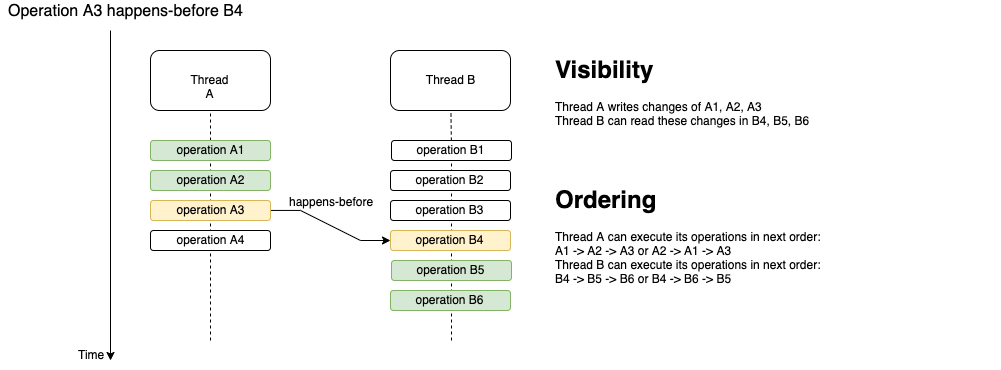In chapter 17 of JLS, it introduce a concept: happens-before consistent.
A set of actions A is happens-before consistent if for all reads r in A, where W(r) is the write action seen by r, it is not the case that either hb(r, W(r)) or that there exists a write w in A such that w.v = r.v and hb(W(r), w) and hb(w, r)"
In my understanding, it equals to following words: ..., it is the case that neither ... nor ...
So my first two questions are:
- is my understanding right?
- what does "w.v = r.v" mean?
It also gives an Example: 17.4.5-1
Thread 1 Thread 2
B = 1; A = 2;
r2 = A; r1 = B;
In first execution order:
1: B = 1;
3: A = 2;
2: r2 = A; // sees initial write of 0
4: r1 = B; // sees initial write of 0
The order itself has already told us that two threads are executed alternately, so my third question is: what does left number mean?
In my understanding, the reason of both r2 and r1 can see initial write of 0 is both A and B are not volatile field. So my fourth quesiton is: whether my understanding is right?
In second execution order:
1: r2 = A; // sees write of A = 2
3: r1 = B; // sees write of B = 1
2: B = 1;
4: A = 2;
According to definition of happens-before consistency, it is not difficult to understand this execution order is happens-before consistent(if my first understanding is correct). So my fifth and sixth questions are: does it exist this situation (reads see writes that occur later) in real world? If it does, could you give me a real example?

